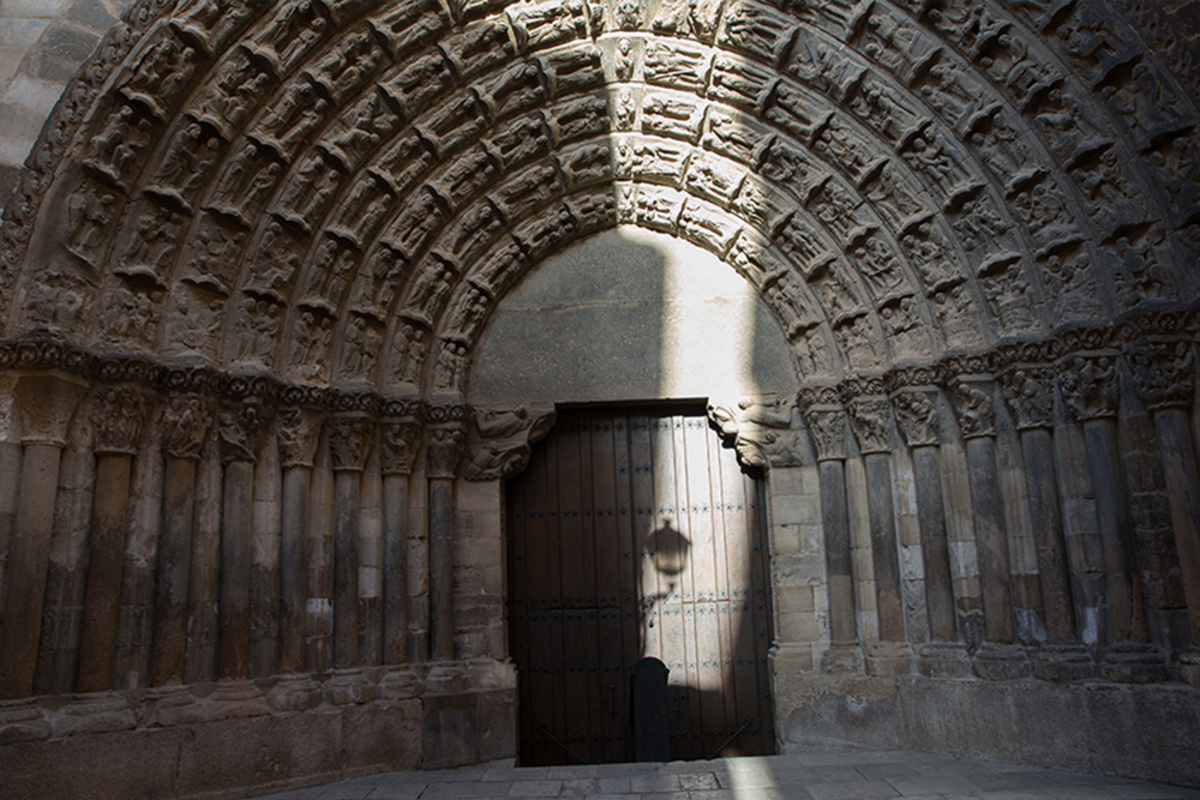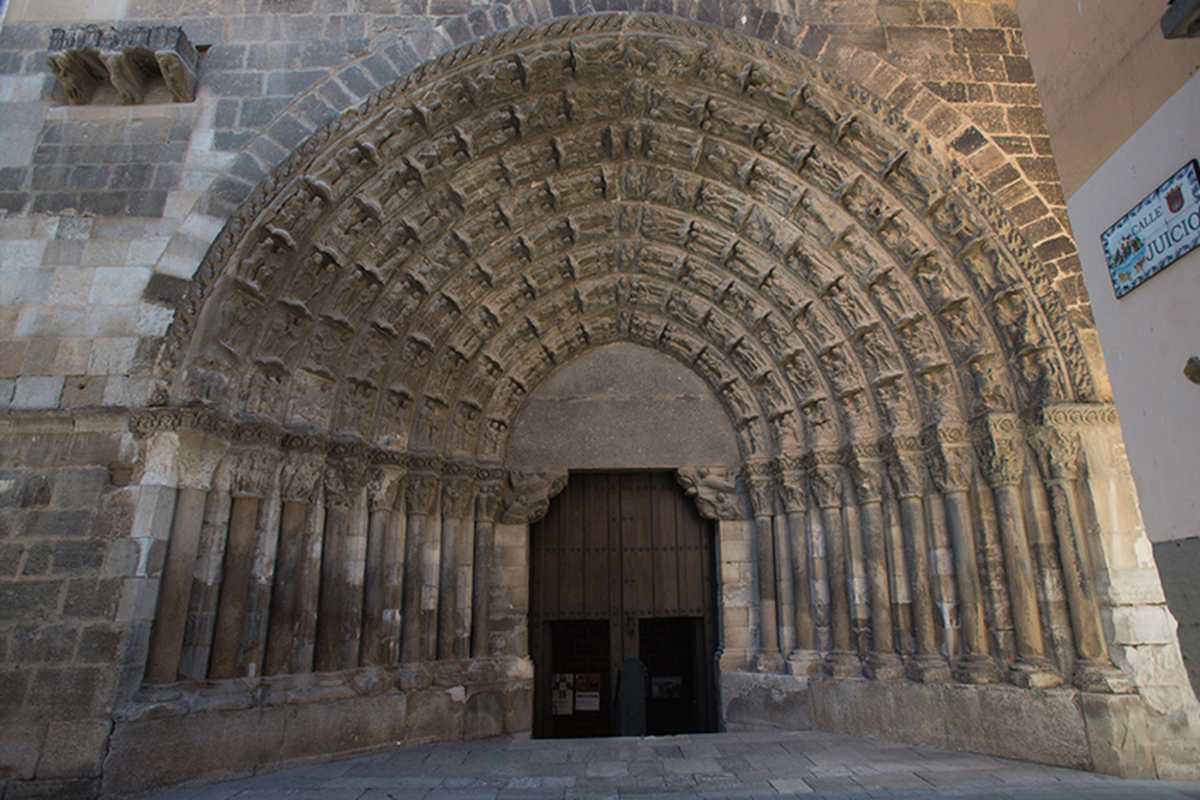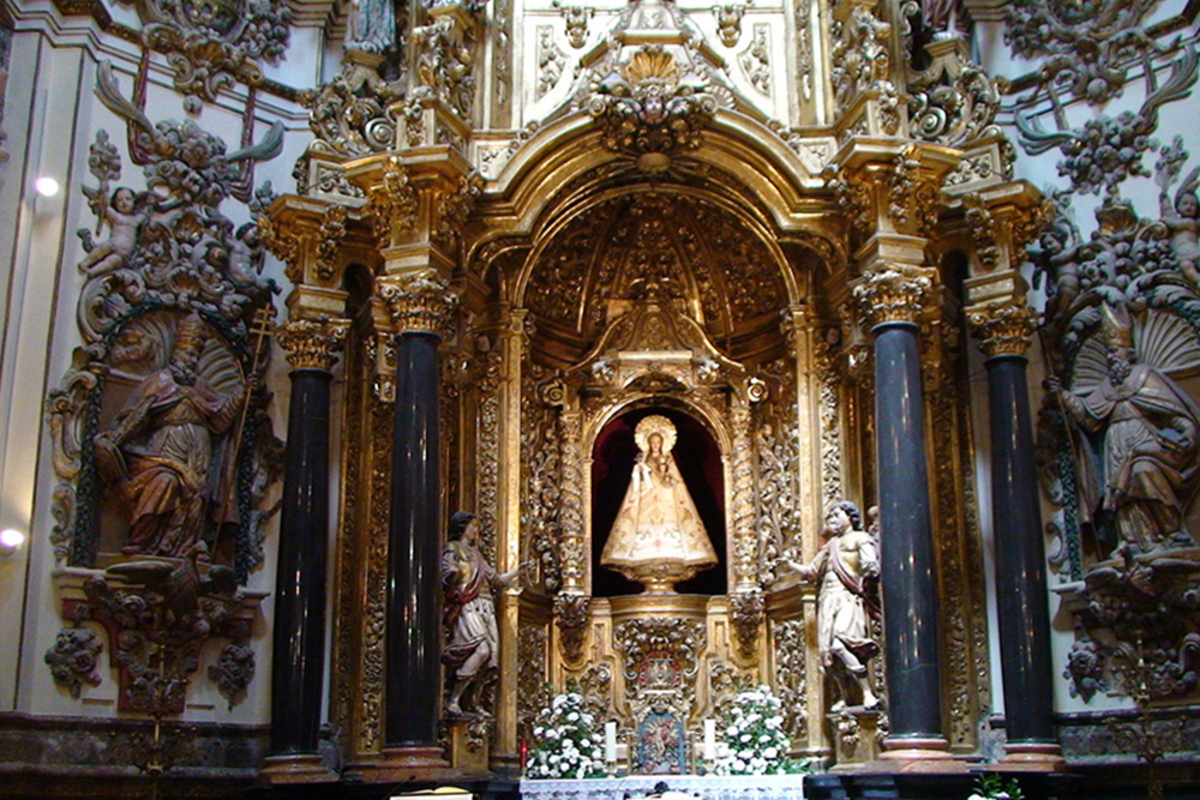Imagen principal

Dirección
C. Roso, 2, 31500 Tudela, Navarra
Teléfono
948 40 21 83
Web
https://museodetudela.com/museo/catedral/
Instagram
https://www.instagram.com/museodetudela/
Facebook
https://www.facebook.com/MuseoDeTudela/?locale=es_ES
Vídeo
TextInMotion-VideoSample-576p_3.mp4 (12.51 MB)
Galería de imágenes



Categoría
Ubicación
42.06335, -1.6055
Descripción corta
The Cathedral is the main monument of the city, and one of the most outstanding monuments of Navarre.
Descripción larga
It is a medieval temple which construction began in the 12th century in Romanesque style and concluded in the 13th century in Gothic. It was declared a National Monument for its historical-artistic interest in 1884. Throughout the centuries it has undergone renovations and extensions, which can be seen both inside and outside, which have left us the best of each style: Gothic altarpieces, Renaissance choir or baroque chapels and tower.
The building was conceived as the Collegiate Church of Saint Mary until 1784, when it was elevated to the dignity of Cathedral by Pius VI, at the request of King Carlos III.
Due to its historical-artistic importance, it was declared National Monument in 1884.
Its construction started at the end of the 12th century, while the mosque located in this space was destroyed. Part of its architecture corresponds to the Romanesque style and as the works progressed, it is the new Gothic style of the 13th century that is imposed.
It is a building that follows the tendencies of the Hispanic-Languedoc architecture, built under the precepts of the Cistercian order. It was built in ashlar stone well square-shaped. By the year 1188 the dedication to what had been erected until then was made, being the works already sufficiently advanced to be used. The Archbishop of Tarragona, Mr. Raimundo de Rocabertí consecrated the altar in 1204.
Its Latin cross plan has three naves with four bays each, of which the central and main nave is the widest and has rectangular bays, topped by a five-bay transept and a chevet with a deep central apse, while the side naves have square bays.
The roofs used, both for the side naves and for the transept, are ribbed vaults with trefoil ribs, which converge in keystones decorated with vegetal, floral and heraldic themes. The system of roofs over the chevet consists of a main apse with a groin vault roof, two side chapels with a vaulted ceiling and two extreme side chapels covered with groin vaults.
Since its architecture follows the Cistercian principles, the decoration is scarce and applied to specific points, which favors the architectural elements, especially the capitals.
On this original structure of medieval times, the works have been constant throughout history, both for extensions and for restorations or improvements. Thus, within this impressive temple there are diverse styles of works.
On the exterior there are three doorways: the oldest is that of the Virgin, to the south; to the north is that of Saint Mary, and to the west, at the foot of the church, the main one, called Puerta del Juicio (Gate of Judgement). This last one is of complicated execution and outstanding, altogether, as well as in the detail of the symbolism represented in the form of monumental sculpture. More information can be found at the same door.
We emphasize the work of the New Tower also facing the exterior, dated from the 17th century. It is a spectacular construction, raised with a remarkable architectural effort, in Mudejar-Baroque style.
Inside the temple we observe numerous chapels with different dedications: the main altar with its impressive Gothic altarpiece dedicated to Saint Mary, the Saint Joaquin with the altarpiece of Saint Catherine, the Saint Martin with a beautiful Plateresque grille, the Saint John the Evangelist (where the White Virgin is located), the one in honor of Our Lady of Sorrows (Baroque altarpiece), the Saint Anne (splendid Baroque, presided by the Gothic carving of the patron saint), the also Baroque altar of the Holy Spirit and the Gothic chapel of Our Lady of Hope.
Within this quick review we will also mention the Renaissance choir, the beautiful baroque organ, the sacristy, the chapterhouse, and, of course, the Romanesque cloister of the Cathedral, which is part of the Museum of Tudela.
The Cathedral can be visited from the Museum of Tudela, except during the hours of worship. Guided tours of the temple are also offered.
The building was conceived as the Collegiate Church of Saint Mary until 1784, when it was elevated to the dignity of Cathedral by Pius VI, at the request of King Carlos III.
Due to its historical-artistic importance, it was declared National Monument in 1884.
Its construction started at the end of the 12th century, while the mosque located in this space was destroyed. Part of its architecture corresponds to the Romanesque style and as the works progressed, it is the new Gothic style of the 13th century that is imposed.
It is a building that follows the tendencies of the Hispanic-Languedoc architecture, built under the precepts of the Cistercian order. It was built in ashlar stone well square-shaped. By the year 1188 the dedication to what had been erected until then was made, being the works already sufficiently advanced to be used. The Archbishop of Tarragona, Mr. Raimundo de Rocabertí consecrated the altar in 1204.
Its Latin cross plan has three naves with four bays each, of which the central and main nave is the widest and has rectangular bays, topped by a five-bay transept and a chevet with a deep central apse, while the side naves have square bays.
The roofs used, both for the side naves and for the transept, are ribbed vaults with trefoil ribs, which converge in keystones decorated with vegetal, floral and heraldic themes. The system of roofs over the chevet consists of a main apse with a groin vault roof, two side chapels with a vaulted ceiling and two extreme side chapels covered with groin vaults.
Since its architecture follows the Cistercian principles, the decoration is scarce and applied to specific points, which favors the architectural elements, especially the capitals.
On this original structure of medieval times, the works have been constant throughout history, both for extensions and for restorations or improvements. Thus, within this impressive temple there are diverse styles of works.
On the exterior there are three doorways: the oldest is that of the Virgin, to the south; to the north is that of Saint Mary, and to the west, at the foot of the church, the main one, called Puerta del Juicio (Gate of Judgement). This last one is of complicated execution and outstanding, altogether, as well as in the detail of the symbolism represented in the form of monumental sculpture. More information can be found at the same door.
We emphasize the work of the New Tower also facing the exterior, dated from the 17th century. It is a spectacular construction, raised with a remarkable architectural effort, in Mudejar-Baroque style.
Inside the temple we observe numerous chapels with different dedications: the main altar with its impressive Gothic altarpiece dedicated to Saint Mary, the Saint Joaquin with the altarpiece of Saint Catherine, the Saint Martin with a beautiful Plateresque grille, the Saint John the Evangelist (where the White Virgin is located), the one in honor of Our Lady of Sorrows (Baroque altarpiece), the Saint Anne (splendid Baroque, presided by the Gothic carving of the patron saint), the also Baroque altar of the Holy Spirit and the Gothic chapel of Our Lady of Hope.
Within this quick review we will also mention the Renaissance choir, the beautiful baroque organ, the sacristy, the chapterhouse, and, of course, the Romanesque cloister of the Cathedral, which is part of the Museum of Tudela.
The Cathedral can be visited from the Museum of Tudela, except during the hours of worship. Guided tours of the temple are also offered.
Destacado
Desactivado